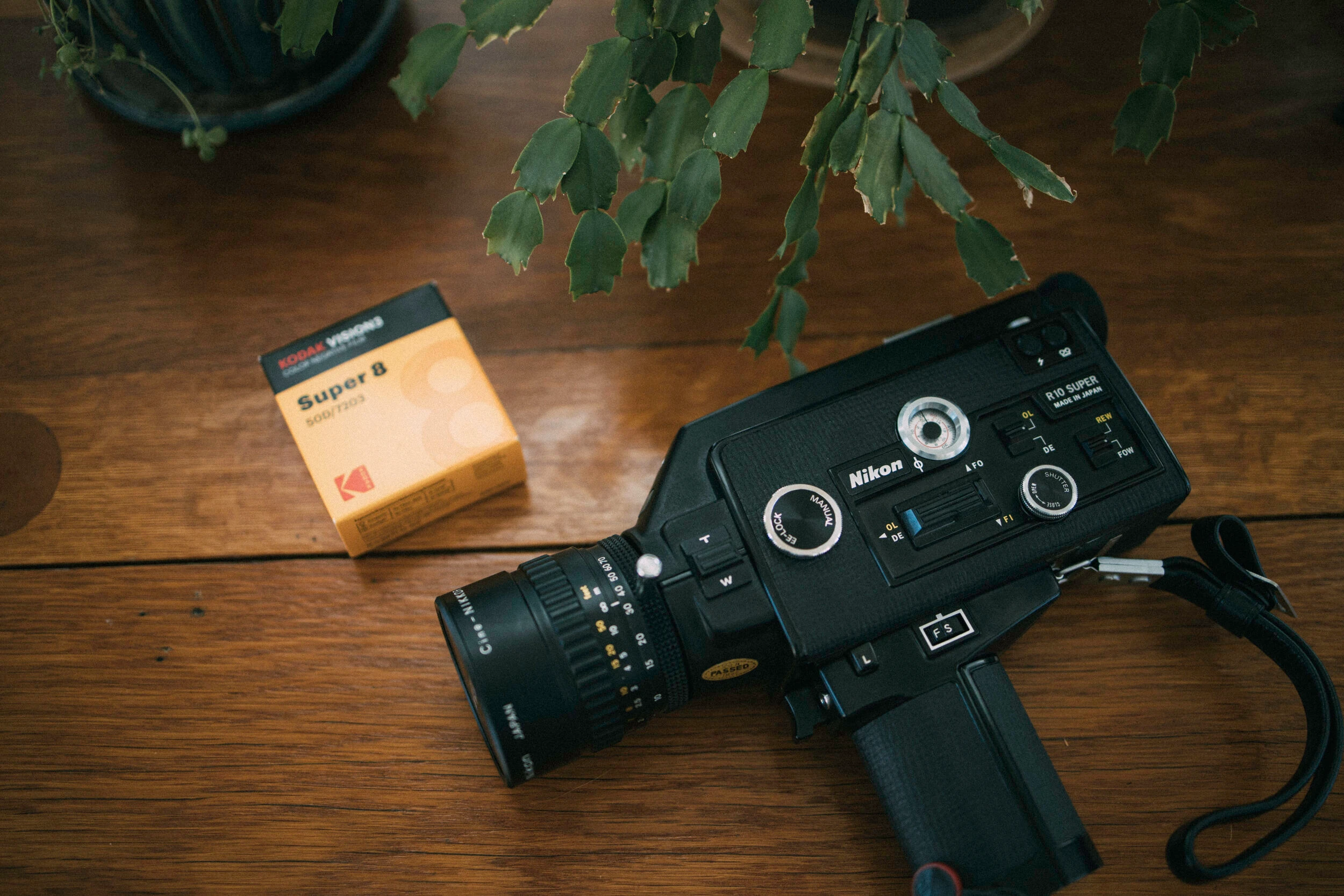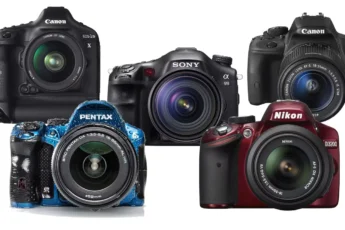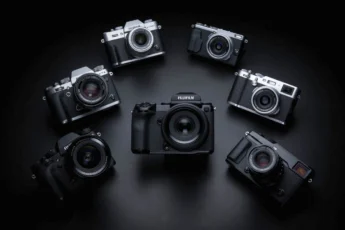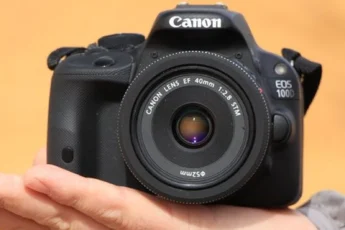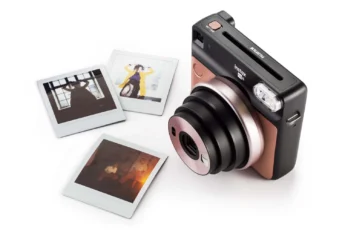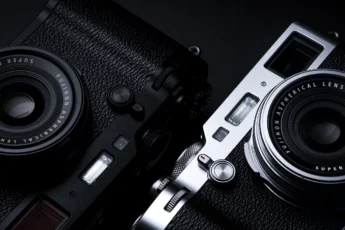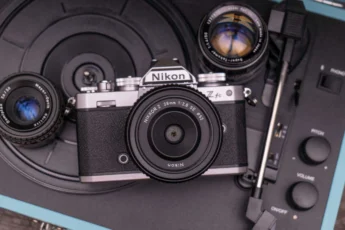In a world dominated by digital cameras and smartphones, there’s something undeniably charming about the tactile experience and vintage aesthetic of shooting with a Super 8 camera. The whirring sound of the film, the soft click of the shutter, and the anticipation of waiting for the footage to be developed all contribute to the unique allure of this classic medium.
Join us as we delve into the fascinating world of Super 8 cameras, exploring their history, significance, and the top models that have left an indelible mark on the film industry. Whether you’re a seasoned filmmaker or a curious beginner, this comprehensive guide will help you discover the joys of capturing memories in classic style.
- Overview of Super 8 Cameras
- Historical Significance of Super 8 Cameras
- Top Super 8 Cameras Reviewed and Explained
- Canon 514XL-S
- Features and Specifications
- Pros and Cons
- Nizo 801 Macro
- Features and Specifications
- Pros and Cons
- Beaulieu 4008 ZM II
- Features and Specifications
- Pros and Cons
- Kodak Brownie 8mm Movie Camera
- Features and Specifications
- Pros and Cons
- Bolex H16
- Features and Specifications
- Pros and Cons
- Comparison of Top 5 Super 8 Cameras
- Performance Metrics
- Price Comparison
- Conclusion
Overview of Super 8 Cameras
Super 8 cameras, introduced by Kodak in 1965, revolutionized the world of amateur filmmaking. These compact, user-friendly devices made it possible for anyone to capture their own movies without the need for expensive professional equipment. The Super 8 format, which uses 8mm film in a convenient cartridge, quickly became popular among families, hobbyists, and aspiring filmmakers.
One of the defining features of Super 8 cameras is their mechanical simplicity. Unlike modern digital cameras with countless buttons and settings, Super 8 cameras often have just a few basic controls, such as a zoom lever, focus ring, and exposure adjustment. This simplicity allows users to focus on the creative aspects of filmmaking rather than getting bogged down in technical details.
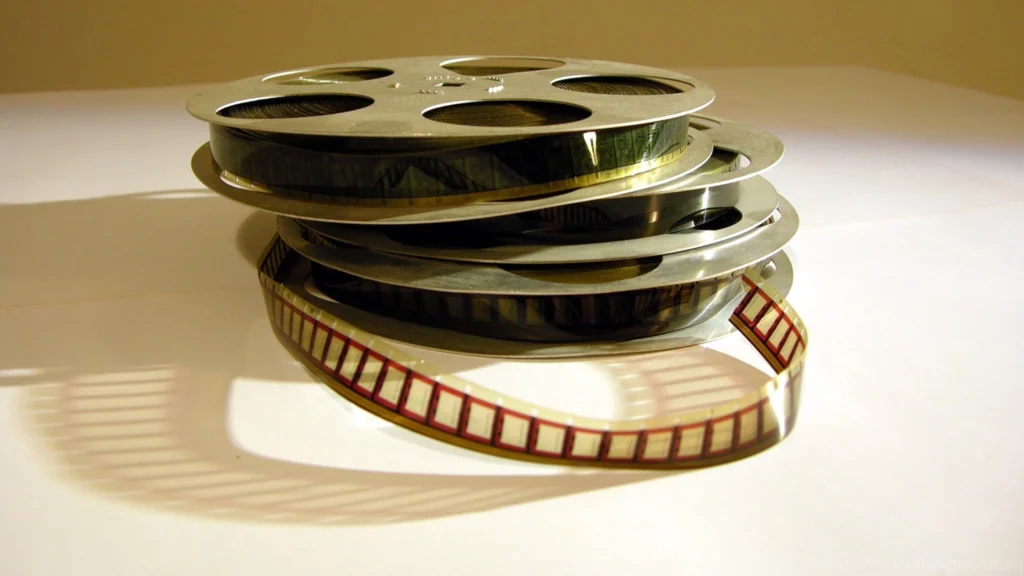
Another key characteristic of Super 8 cameras is their distinctive look and feel. The grainy, slightly soft images produced by these cameras have a nostalgic quality that evokes a sense of warmth and authenticity. Many filmmakers intentionally choose to shoot with Super 8 cameras to achieve this vintage aesthetic, which can add a unique character to their projects.
Over the years, Super 8 cameras have undergone various improvements and iterations. From the early models with manual wind-up mechanisms to the later versions with built-in battery power and sound recording capabilities, the evolution of Super 8 cameras reflects the changing needs and preferences of filmmakers.
Despite the advent of digital technology, Super 8 cameras have managed to maintain a dedicated following. Many enthusiasts appreciate the tactile experience of working with film and the challenge of achieving great results with limited resources. Today, a thriving community of Super 8 filmmakers continues to explore the creative possibilities of this classic medium, keeping the spirit of analog filmmaking alive.
Historical Significance of Super 8 Cameras
Super 8 cameras have played a significant role in shaping the film industry and amateur filmmaking. When Kodak introduced the Super 8 format in 1965, it democratized the art of moviemaking, making it accessible to a wider audience. Suddenly, families could capture their precious moments, aspiring filmmakers could experiment with their craft, and documentarians could tell stories from new perspectives.
Many renowned filmmakers, such as Steven Spielberg, J.J. Abrams, and Christopher Nolan, began their careers shooting with Super 8 cameras. These early experiences laid the foundation for their future success and helped them develop their unique visual styles. As Spielberg once said, “I think of Super 8 as the ammunition of my youth. It was the gunpowder, it was the spark that ignited the flame of creativity for me.
Super 8 cameras also played a crucial role in documenting historical events and social movements. During the 1960s and 1970s, activists and independent journalists used Super 8 cameras to capture footage of protests, rallies, and everyday life, providing valuable insights into the zeitgeist of the era. These raw, unfiltered images served as powerful tools for raising awareness and effecting change.
In the realm of avant-garde and experimental filmmaking, Super 8 cameras became a favorite tool for artists seeking to push the boundaries of the medium. The affordability and portability of these cameras allowed filmmakers to explore new techniques, such as stop-motion animation, double exposures, and abstract visuals. Many groundbreaking works of art, such as Stan Brakhage’s “Mothlight” and Jonas Mekas’ “Walden,” were created using Super 8 film.
As video technology advanced in the 1980s and 1990s, Super 8 cameras began to lose their mainstream appeal. However, they never entirely disappeared from the filmmaking landscape. In recent years, there has been a resurgence of interest in analog filmmaking, with many artists and enthusiasts rediscovering the unique qualities of Super 8 cameras. This renewed appreciation has led to the development of new film stocks, the revival of film processing labs, and the creation of dedicated communities where Super 8 enthusiasts can share their knowledge and passion.
Today, Super 8 cameras continue to inspire and influence filmmakers around the world. They serve as a reminder of the power of simplicity, the beauty of imperfection, and the importance of preserving the tactile experience of filmmaking in an increasingly digital age. As long as there are those who value the art of capturing memories in classic style, Super 8 cameras will remain an integral part of cinema history.
Top Super 8 Cameras Reviewed and Explained
Canon 514XL-S
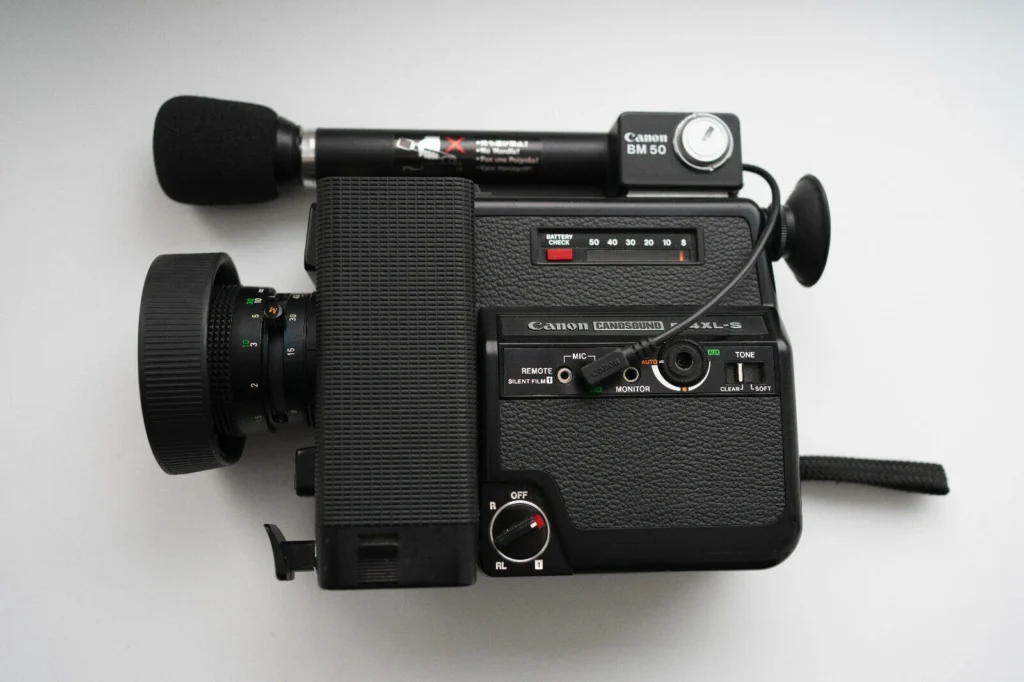
Features and Specifications
The Canon 514XL-S, released in 1976, is a compact and lightweight Super 8 camera that offers a perfect blend of performance and ease of use. Its standout featureis the sharp 9-45mm f/1.4 zoom lens, which consists of 13 elements in 11 groups and features Spectra-coating for enhanced image quality. The 5x zoom ratio allows for versatile framing options, while the manual focusing system enables precise control over the focus from 1.2 meters to infinity.
Other notable specifications of the Canon 514XL-S include:
- Shutter speeds: 1/30, 1/60, and 1/250 seconds
- Built-in CdS meter for automatic exposure control
- Manual exposure override with ±2 stops adjustment
- Fade-in/fade-out effect
- Single frame and continuous shooting modes
- Compact size: 237 x 65 x 145 mm
- Lightweight body: 1,150 grams
The Canon 514XL-S also features a convenient drop-in loading system for Super 8 film cartridges, making it easy to switch between different film stocks. The camera’s ergonomic design, with a contoured handgrip and strategically placed controls, ensures comfortable handling during extended shooting sessions.
Pros and Cons
Pros:
- Exceptional image quality thanks to the high-quality Spectra-coated lens
- Wide range of creative options with manual exposure control and fade effects
- Compact and lightweight design for easy portability
- User-friendly operation with automatic exposure and drop-in film loading
- Durable construction for reliable performance
Cons:
- No built-in sound recording capabilities (requires separate audio equipment)
- Limited slow-motion options compared to some other Super 8 cameras
- Relatively high price point for a Super 8 camera
Overall, the Canon 514XL-S is an excellent choice for filmmakers and enthusiasts who prioritize image quality, creative control, and portability. Its impressive lens, combined with a range of user-friendly features, makes it a top contender among Super 8 cameras.
Nizo 801 Macro
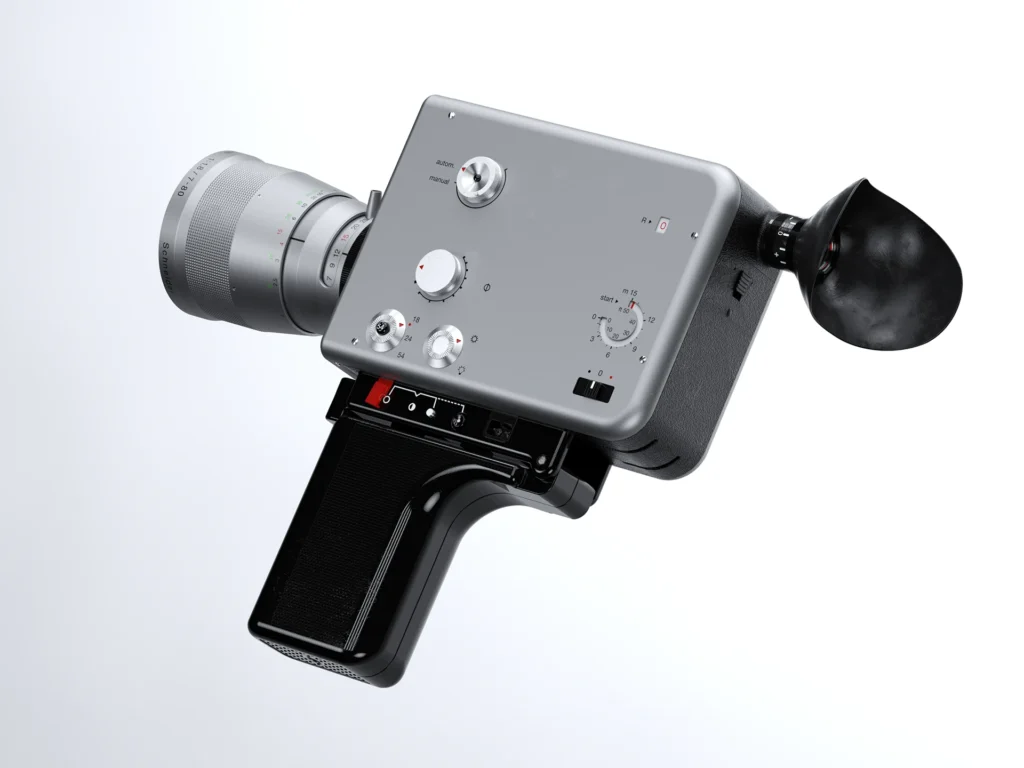
Features and Specifications
The Nizo 801 Macro, introduced in the mid-1970s, is a high-end Super 8 camera that offers a wealth of advanced features for discerning filmmakers. At the heart of the camera is a superb Schneider Kreuznach Variogon 7-80mm f/1.4 macro zoom lens, which delivers exceptional sharpness, contrast, and color rendition. The macro focusing capability allows for stunning close-up shots, adding versatility to your filmmaking arsenal.
Key features and specifications of the Nizo 801 Macro include:
- Fully automatic exposure control with manual override
- Aperture priority mode for depth of field control
- Variable shutter speeds from 1/30 to 1/500 seconds
- Single frame and time-lapse shooting modes
- Intervalometer for programmable time-lapse sequences
- Automatic and manual fades, dissolves, and lap dissolves
- Built-in film timer and footage counter
- Robust aluminum casing for durability
The Nizo 801 Macro also boasts a unique “Automatic B” feature, which allows for long exposure times of up to 30 seconds, perfect for capturing nighttime scenes or creative light trails. The camera’s ergonomic design, with a comfortable pistol grip and well-placed controls, ensures a steady and intuitive shooting experience.
Pros and Cons
Pros:
- Exceptional image quality with the Schneider Kreuznach Variogon lens
- Macro focusing capability for stunning close-up shots
- Advanced features like aperture priority mode and intervalometer
- “Automatic B” long exposure mode for creative effects
- Robust aluminum casing for enhanced durability
Cons:
- Heavier and bulkier than some other Super 8 cameras
- Higher price point due to advanced features and build quality
- Requires some technical knowledge to fully utilize its capabilities
The Nizo 801 Macro is an ideal choice for serious filmmakers who demand the highest level of image quality, versatility, and creative control from their Super 8 camera. Its advanced features and exceptional lens make it a top performer in the world of classic filmmaking.
Beaulieu 4008 ZM II
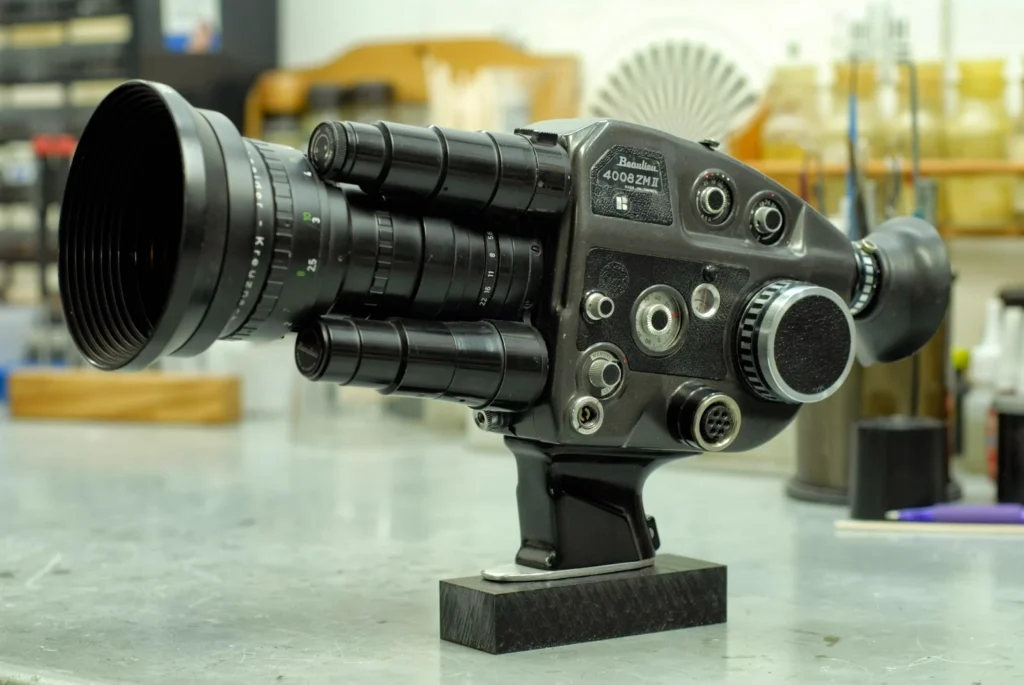
Features and Specifications
The Beaulieu 4008 ZM II, produced from 1971 to 1977, is a professional-grade Super 8 camera that offers a remarkable set of features for the most demanding filmmakers. It is equipped with a Schneider Kreuznach 6-66mm f/1.8 zoom lens, known for its exceptional sharpness and color reproduction. The camera’s ground glass focusing system allows for precise manual focus control, while the macro focusing capability enables stunning close-up shots.
Notable features and specifications of the Beaulieu 4008 ZM II include:
- Manual and automatic exposure modes
- Frame rates from 2 to 70 frames per second for slow-motion and time-lapse effects
- 180-degree adjustable shutter for creative exposure controlInterchangeable lens mount for expanded optical options
- Fade and lap dissolve effects
- Single frame and continuous shooting modes
- Provision for external power supply
- Robust metal construction for professional durability
One of the standout features of the Beaulieu 4008 ZM II is its wide range of frame rates, which allows for incredible creative flexibility. From extreme slow-motion to accelerated time-lapse, this camera can capture unique perspectives and stunning visual effects. The interchangeable lens mount also sets it apart from many other Super 8 cameras, enabling filmmakers to experiment with different lenses for specific shooting situations.
Pros and Cons
Pros:
- Exceptional image quality with the Schneider Kreuznach zoom lens
- Wide range of frame rates for creative slow-motion and time-lapse effects
- Interchangeable lens mount for expanded optical options
- Professional-grade features like ground glass focusing and adjustable shutter
- Robust metal construction for long-lasting durability
Cons:
- Heavier and bulkier than most Super 8 cameras
- Higher price point due to professional-grade features and build quality
- Requires a higher level of technical knowledge to operate effectively
- Limited availability due to its vintage status
The Beaulieu 4008 ZM II is a top choice for professional filmmakers and serious enthusiasts who require the utmost in image quality, creative control, and durability. Its advanced features and interchangeable lens system make it a versatile tool for a wide range of shooting situations, from narrative films to documentaries and experimental projects.
Kodak Brownie 8mm Movie Camera
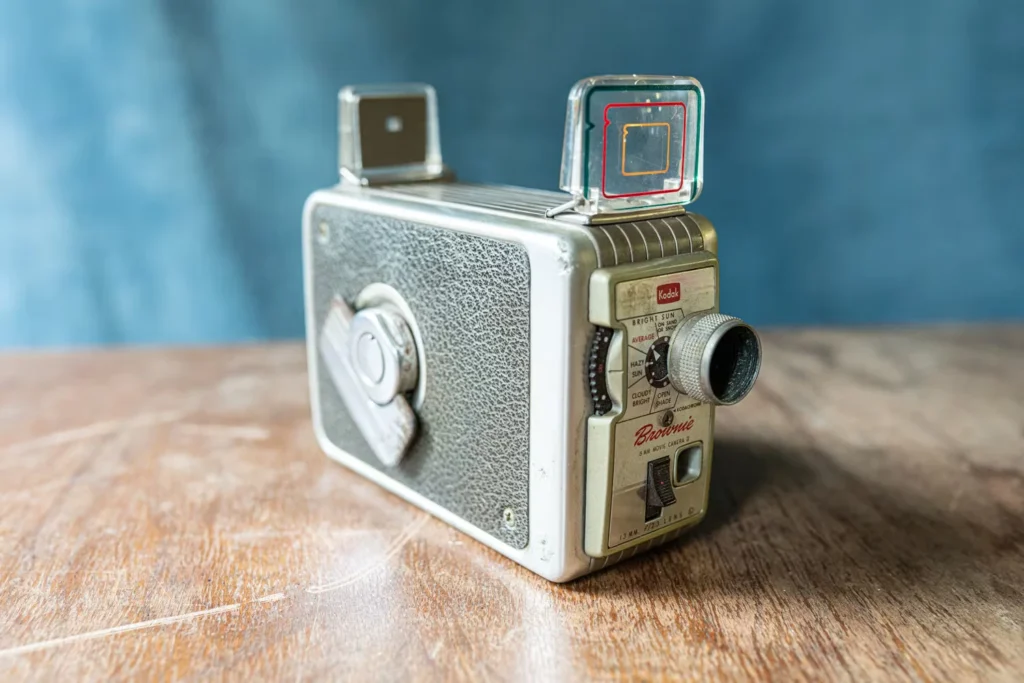
Features and Specifications
The Kodak Brownie 8mm Movie Camera, introduced in 1951, is a classic example of the early days of amateur filmmaking. This simple, affordable camera played a significant role in making home movies accessible to the masses. Despite its basic features, the Brownie 8mm Movie Camera captures the charm and nostalgia of mid-20th century filmmaking.
Key features and specifications of the Kodak Brownie 8mm Movie Camera include:
- Fixed-focus f/2.7 lens
- Rotary disc shutter with speeds of 1/40 and 1/60 seconds
- Manual wind-up spring motor
- Footage indicator to keep track of remaining film
- Compact and lightweight Bakelite plastic body
- Simple, user-friendly operation
While the Kodak Brownie 8mm Movie Camera lacks the advanced features of later Super 8 cameras, its simplicity is part of its appeal. The fixed-focus lens and limited shutter speeds encourage users to focus on the essence of filmmaking – capturing moments and telling stories. The camera’s compact size and lightweight body make it easy to carry and use in various settings, from family gatherings to outdoor adventures.
Pros and Cons
Pros:
- Simple and user-friendly operation, ideal for beginners
- Affordable entry point into the world of analog filmmaking
- Compact and lightweight design for easy portability
- Captures the nostalgic charm of mid-20th century home movies
- Durable Bakelite plastic construction
Cons:
- Limited creative control with fixed-focus lens and basic shutter speeds
- No built-in exposure meter or automatic settings
- Manual wind-up motor requires frequent rewinding
- No slow-motion or time-lapse capabilities
- Older 8mm format may be more difficult to find and process than Super 8
The Kodak Brownie 8mm Movie Camera is a delightful choice for those seeking to experience the roots of amateur filmmaking or capture the nostalgic aesthetic of mid-century home movies. While it may not offer the advanced features of later Super 8 cameras, its simplicity and affordability make it an accessible entry point into the world of analog film.
Bolex H16
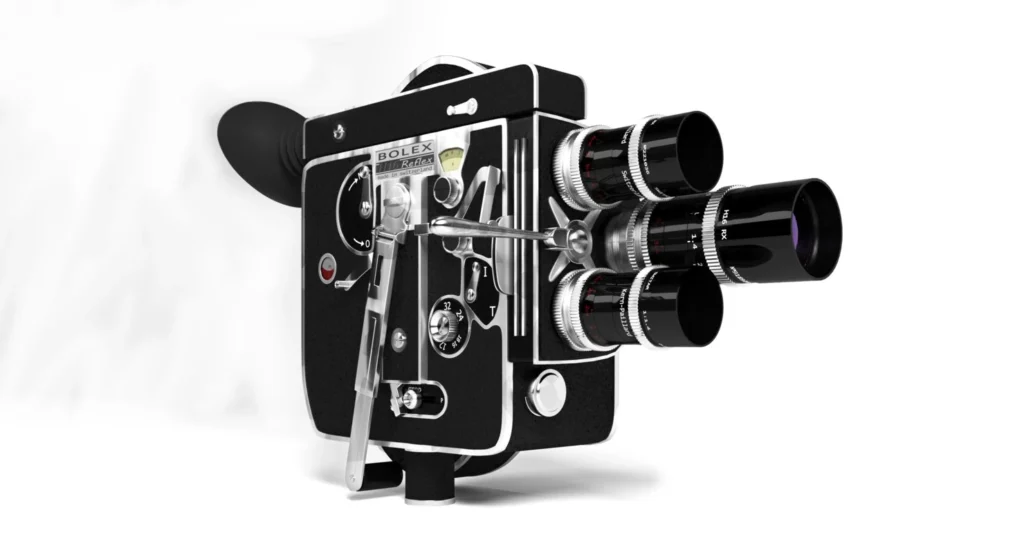
Features and Specifications
The Bolex H16, first introduced in 1935, is a legendary 16mm camera that has been widely used by professional filmmakers, documentarians, and artists throughout the 20th century. While not a Super 8 camera, the Bolex H16 deserves mention for its significant impact on the world of filmmaking and its enduring popularity among analog film enthusiasts.
Key features and specifications of the Bolex H16 include:
- Interchangeable lens mount (C-mount) for a wide range of optical options
- Variable shutter with speeds from 1/30 to 1/200 seconds
- Frame rates from 8 to 64 frames per second for slow-motion and time-lapse effects
- Spring-wound clockwork motor with a maximum run time of 30 seconds
- Reflex viewfinder for precise framing and focusing
- Single frame and continuous shooting modes
- Robust, all-metal construction for professional durability
The Bolex H16’s interchangeable lens mount is one of its most significant features, allowing filmmakers to use a vast array of lenses to achieve specific creative effects. The variable shutter and wide range of frame rates further enhance its versatility, enabling users to create stunning slow-motion sequences or intricate time-lapse videos. The camera’s spring-wound motor, while limited in run time, provides a unique tactile experience and eliminates the need for batteries.
Pros and Cons
Pros:
- Interchangeable lens mount for unparalleled optical flexibility
- Wide range of frame rates for creative slow-motion and time-lapse effects
- Reflex viewfinder for precise framing and focusing
- Robust, all-metal construction for long-lasting durability
- Iconic design and rich history in professional filmmaking
Cons:
- Larger and heavier than Super 8 cameras
- Higher cost of 16mm film stock and processing compared to Super 8
- Limited run time with spring-wound motor
- Requires significant technical knowledge to operate effectively
- Vintage models may require maintenance or repair
While not a Super 8 camera, the Bolex H16 is a legendary tool that has earned its place in the pantheon of classic filmmaking equipment. Its versatility, durability, and iconic design make it a favorite among professional filmmakers, artists, and collectors who appreciate the craftsmanship and history behind this remarkable machine.
Comparison of Top 5 Super 8 Cameras
Performance Metrics
When comparing the top Super 8 cameras, it’s essential to consider several key performance metrics that impact the quality of the footage and the overall shooting experience. These metrics include:
- Image Quality: The sharpness, color accuracy, and overall aesthetic of the footage captured by the camera’s lens and film stock.
- Low Light Performance: The camera’s ability to capture clear, well-exposed images in low light conditions without excessive grain or noise.
- Ease of Use: The intuitiveness of the camera’s controls, the simplicity of loading and unloading film, and the overall user experience.
- Durability: The camera’s build quality, resistance to wear and tear, and ability to withstand the rigors of frequent use.
- Versatility: The range of creative options available, such as interchangeable lenses, variable frame rates, and manual control over exposure and focus.
Based on these metrics, the top 5 Super 8 cameras can be ranked as follows:
- Nizo 801 Macro: With its exceptional Schneider Kreuznach lens, advanced features, and robust construction, the Nizo 801 Macro offers the best overall performance.
- Beaulieu 4008 ZM II: The Beaulieu 4008 ZM II’s interchangeable lens mount, wide range of frame rates, and professional-grade features make it a close second in terms of versatility and image quality.
- Canon 514XL-S: The Canon 514XL-S strikes a balance between image quality, ease of use, and portability, making it an excellent choice for both beginners and experienced filmmakers.
- Bolex H16: Although not a Super 8 camera, the Bolex H16’s legendary status, interchangeable lens mount, and wide range of creative options earn it a spot on this list.
- Kodak Brownie 8mm Movie Camera: The Kodak Brownie 8mm Movie Camera’s simplicity, affordability, and nostalgic charm make it an attractive option for those seeking to experience the roots of amateur filmmaking.
Price Comparison
The cost of Super 8 cameras can vary significantly depending on factors such as brand, model, features, and condition. Vintage cameras in good working order can range from a few hundred to several thousand dollars, while newer, high-end models can cost even more. Here’s a rough price comparison of the top 5 cameras:
- Nizo 801 Macro: $1,500 – $3,000+
- Beaulieu 4008 ZM II: $2,000 – $4,000+
- Canon 514XL-S: $500 – $1,500
- Bolex H16: $1,000 – $5,000+ (depending on model and condition)
- Kodak Brownie 8mm Movie Camera: $50 – $300
It’s important to note that the cost of film stock and processing should also be considered when budgeting for a Super 8 camera. While prices vary, expect to spend around $30-$50 per 50-foot cartridge of Super 8 film, plus processing and scanning fees.
Conclusion
Super 8 cameras have left an indelible mark on the world of filmmaking, offering a unique blend of nostalgia, creativity, and craftsmanship. From the simple charm of the Kodak Brownie 8mm Movie Camera to the professional-grade features of the Nizo 801 Macro and Beaulieu 4008 ZM II, these classic cameras continue to inspire and captivate filmmakers and enthusiasts alike.
When choosing a Super 8 camera, consider your specific needs and priorities. Are you looking for the best possible image quality and versatility, or do you value simplicity and affordability above all else? Do you plan to shoot primarily in low light conditions, or will you be working across a range of environments? Answering these questions will help guide you toward the camera that best suits your creative vision and budget.
For those just starting out with Super 8 filmmaking, the Canon 514XL-S offers an excellent balance of image quality, ease of use, and affordability. Its compact design and user-friendly features make it an ideal choice for beginners looking to explore the world of analog film without breaking the bank.
More experienced filmmakers and professionals may gravitate toward the advanced features and exceptional image quality of the Nizo 801 Macro or the Beaulieu 4008 ZM II. These cameras offer unparalleled versatility and creative control, allowing users to push the boundaries of what’s possible with Super 8 film.
Regardless of which camera you choose, shooting with Super 8 is an immersive, tactile experience that connects you to the rich history of analog filmmaking. The whir of the motor, the soft click of the shutter, and the anticipation of seeing your footage come to life all contribute to the magic of this classic medium.
As you embark on your Super 8 journey, remember to embrace the imperfections and limitations of the format. The grain, the softness, and the occasional light leak are all part of the charm and character of Super 8 film. These quirks are what give your footage a unique, timeless quality that simply can’t be replicated with digital technology.
In a world increasingly dominated by digital media, shooting with Super 8 is an act of rebellion, a way to slow down and reconnect with the fundamentals of filmmaking. It’s a reminder that sometimes, the most compelling stories are told not with the latest cutting-edge technology, but with a simple camera, a few rolls of film, and a vision.

